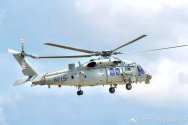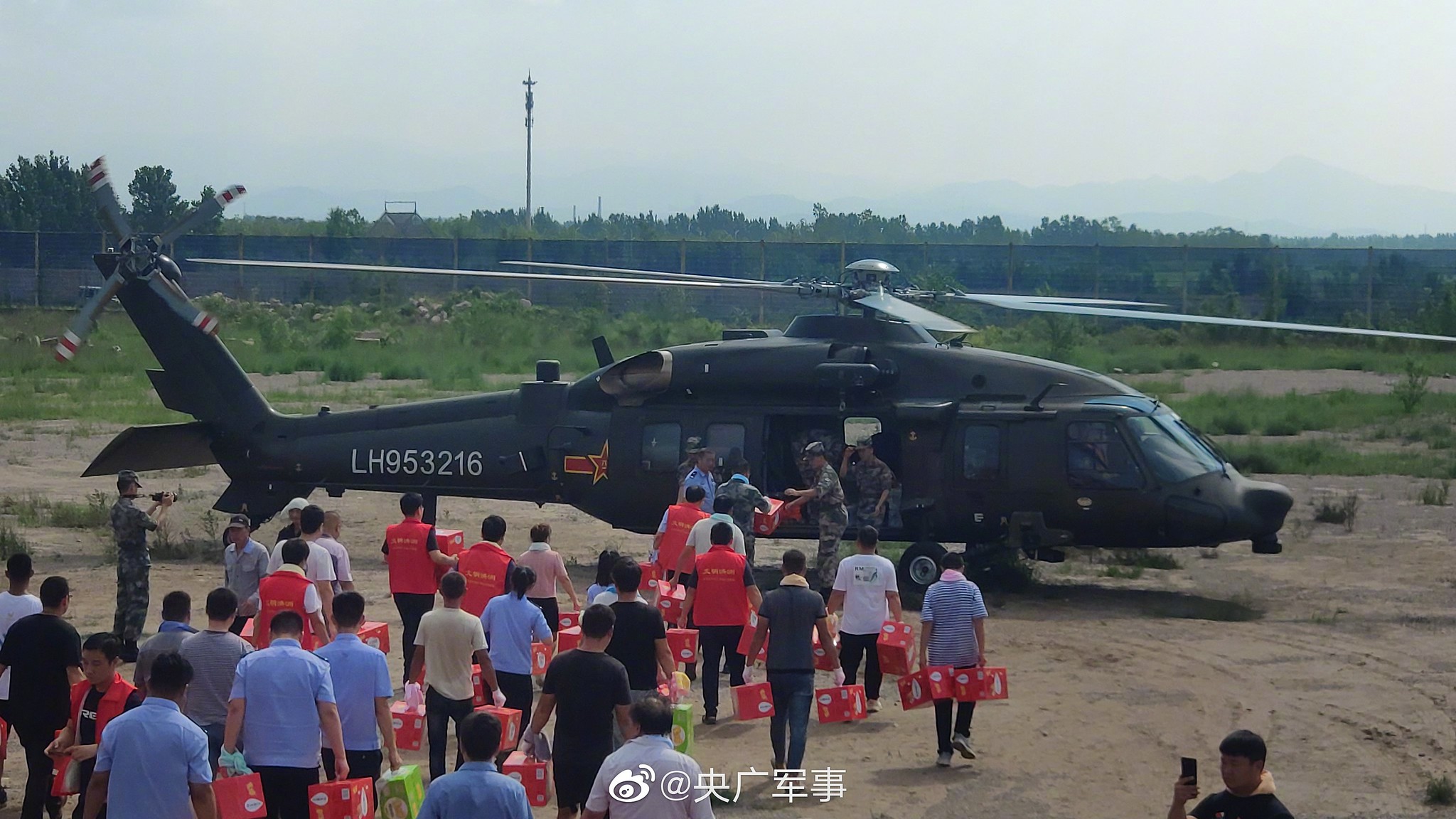You are using an out of date browser. It may not display this or other websites correctly.
You should upgrade or use an alternative browser.
You should upgrade or use an alternative browser.
Z-20 (all variants) thread
- Thread starter delft
- Start date
A new image of the Z-20S, the PLAN's multi-role variant of the Z-20. As it seems, this is still a prototype - and most interesting, no. 6215 was not yet spotted before (only nos. 6211 or 6212) - and it would be interesting to know, when the naval variants will enter service.
(Image via @坦克装甲车辆杂志社 from Weibo)

(Image via @坦克装甲车辆杂志社 from Weibo)

Interesting the Chinese did not tempt to develop a coax rotor helicopter for shipboard use even though they have had kamov helicopters in service for some time. Coax helicopters have significant advances for use on ships, being more compact, no dangerous tail anti-torque rotor, and more efficient because all engine power is devote to lift and forward thrust, with no power wasted in the anti-torque rotor.
The biggest downside is mechanical reliability right? I think that’s the only answer.Interesting the Chinese did not tempt to develop a coax rotor helicopter for shipboard use even though they have had kamov helicopters in service for some time. Coax helicopters have significant advances for use on ships, being more compact, no dangerous tail anti-torque rotor, and more efficient because all engine power is devote to lift and forward thrust, with no power wasted in the anti-torque rotor.
Reliability is fine, kamovs have found service much beyond typical "Russian equipment habitat".The biggest downside is mechanical reliability right? I think that’s the only answer.
Their biggest tradeoff is they're more compact in one dimension and less - in other.
You can almost reliably non-Russian combatants intended for Russian helicopters - their hangers are really tall.
Basically, technically it doesn't matter all that much, both do their job. Kamov has a wealth of experience in that it is doing - it only makes sense to continue doing just that.
For Kamov, yes, that is their specialty.Reliability is fine, kamovs have found service much beyond typical "Russian equipment habitat".
Their biggest tradeoff is they're more compact in one dimension and less - in other.
You can almost reliably non-Russian combatants intended for Russian helicopters - their hangers are really tall.
Basically, technically it doesn't matter all that much, both do their job. Kamov has a wealth of experience in that it is doing - it only makes sense to continue doing just that.
If we are talking about why there are no Chinese attempts to create such a design (in the context of Z-20 thread), then there are zero Chinese companies with experience.
Plus considering Z-20 as a high-priority project, probably not the place to experiment with “exotic” designs.
Reliability is fine, kamovs have found service much beyond typical "Russian equipment habitat".
Their biggest tradeoff is they're more compact in one dimension and less - in other.
You can almost reliably non-Russian combatants intended for Russian helicopters - their hangers are really tall.
Basically, technically it doesn't matter all that much, both do their job. Kamov has a wealth of experience in that it is doing - it only makes sense to continue doing just that.
hangers typically have no fixed structure above them, so making them taller has relatively little impact on the ship’s layout or utilization of available hull and deck space. Having to make the hangers longer would adversely impact the ship’s layout and utilization of available deck space.
For Kamov, yes, that is their specialty.
If we are talking about why there are no Chinese attempts to create such a design (in the context of Z-20 thread), then there are zero Chinese companies with experience.
Plus considering Z-20 as a high-priority project, probably not the place to experiment with “exotic” designs.
Coax might not be an optimal solution for land military helicopter that is likely to be subjected to direct enemy fire, Kamov’s Ka-50 attack helicopter not withstanding, because the long exposed rotor hub of the coax rotor arrangement is probably a major point of vulnerability to small arms snd light AAA fire. so a conventional design makes sense.
But for naval use the risk of direct fire that can take out its rotor hub but would otherwise not have taken out the helicopter is much smaller.
The question would be is it worth the cost to develop a coax helicopter for niche naval use, or does it maximize the effectiveness of the naval force overall if investment in helicopters can be reduced via economizing measure of adapting a land based design.








